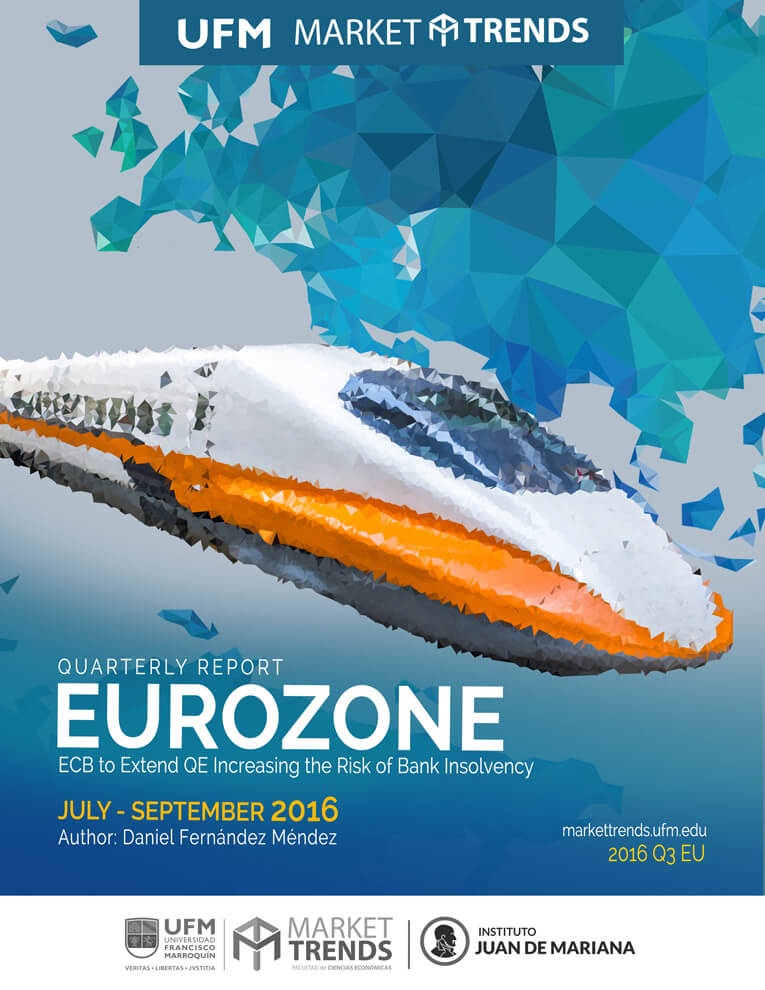The European Central Bank is expanding the quantitative easing even though the program, along with negative interest rates, has only manage to damage the banking sector. The credit extended by the banking sector and the underlying prices—the ECB’s performing targets—are at pre-QE levels.
The Eurozone is growing despite of the ECB. Growth is solid, although it is different between countries. Value creation and employment have been slightly affected by international political and economic turmoil. The extent of the damage caused by the ECB’s non-conventional monetary policy is still to be determined.
Contents
- Gross domestic product (GDP)
- Purchase Managers’ Indexes (PMIs)
- Cyclical sector demand
- Employment trends
- Economic sentiment
- Monetary aggregates
- Consumer Price Index (CPI) and CPI differential with other eurozone countries
- Industrial price index
- Spanish stock market (IBEX 35)
- Spanish sovereign bond yields
- Non-performing loans/assets in the Spanish banking system
- Spanish banking sector assets
- Credit to businesses, to households
- Yield curve spread
- Public sector
- Balance of trade and current account analysis
Author
- Daniel Fernández
Daniel is a PhD candidate in applied economics at Universidad Rey Juan Carlos in Madrid. He has a master’s degree in Austrian school economics from Universidad Rey Juan Carlos and a master’s degree in applied economics from Universidad de Alcalá. He teaches economics at Universidad Francisco Marroquín. Daniel also is the director of the technical department of the Guatemala Global Entrepreneurship Monitor (GEM). His research interests are monetary theory, financial markets, economic cycles, and the positive theory of capital.



